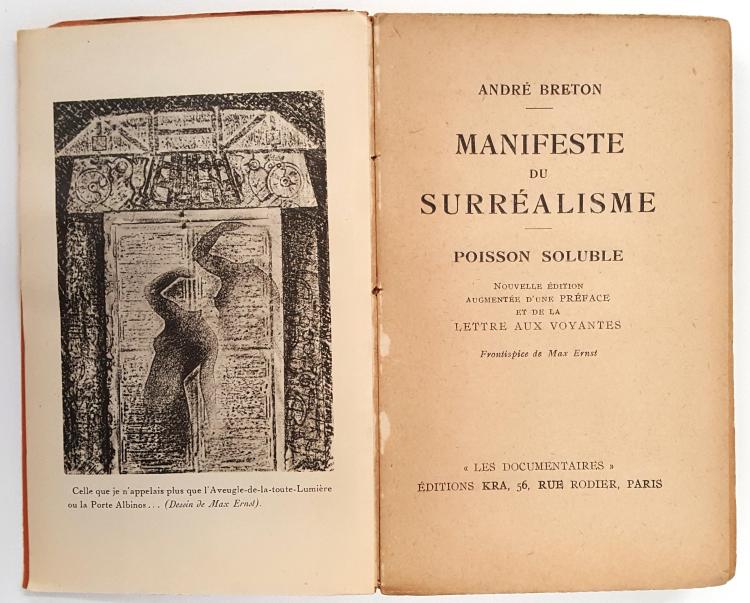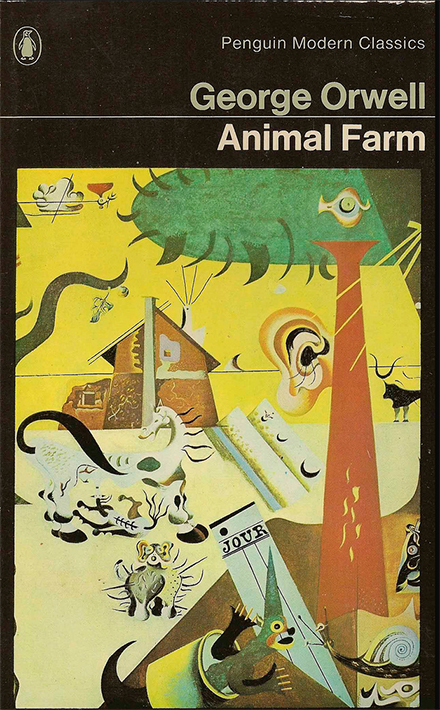RADIUM AGE ART (1924)
By:
September 6, 2024
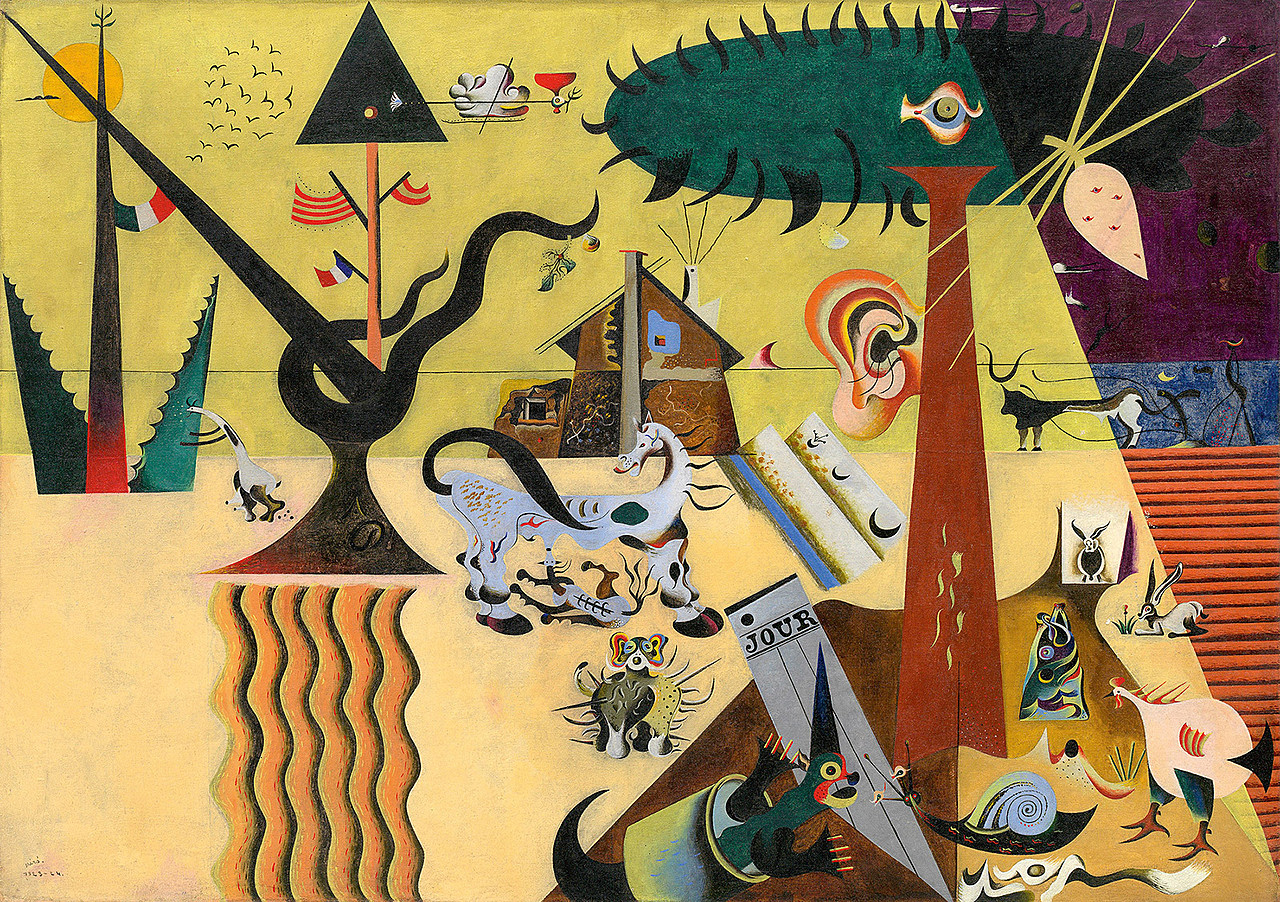
A series of notes regarding proto sf-adjacent artwork created during the sf genre’s emergent Radium Age (1900–1935). Very much a work-in-progress. Curation and categorization by Josh Glenn, whose notes are rough-and-ready — and in some cases, no doubt, improperly attributed. Also see these series: RADIUM AGE TIMELINE and RADIUM AGE POETRY.
RADIUM AGE ART: 1900 | 1901 | 1902 | 1903 | 1904 | 1905 | 1906 | 1907 | 1908 | 1909 | 1910 | 1911 | 1912 | 1913 | 1914 | 1915 | 1916 | 1917 | 1918 | 1919 | 1920 | 1921 | 1922 | 1923 | 1924 | 1925 | 1926 | 1927 | 1928 | 1929 | 1930 | 1931 | 1932 | 1933 | 1934 | 1935 | THEMATIC INDEX.
The year 1924, in my periodization scheme, marks the beginning of the cultural decade known as the “Twenties.” Of course there are no hard stops and starts in culture, so it’s more accurate to describe 1924 (and 1923) as cusp years during which the Teens end and the Twenties begin.
In 1924 André Breton published his Manifeste du surréalisme, and the first issue of the newly organized group’s review La Révolution surréaliste. (He also brought out his first collection of critical and polemical essays.)
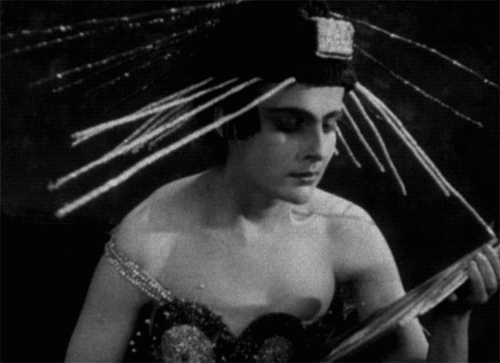
Première of the Dadaist post-Cubist Futurist experimental art film Ballet Mécanique conceived, written and co-directed by Fernand Léger in collaboration with Dudley Murphy and Man Ray at the Internationale Ausstellung neuer Theatertechnik (International Exposition for New Theater Technique) in Vienna.
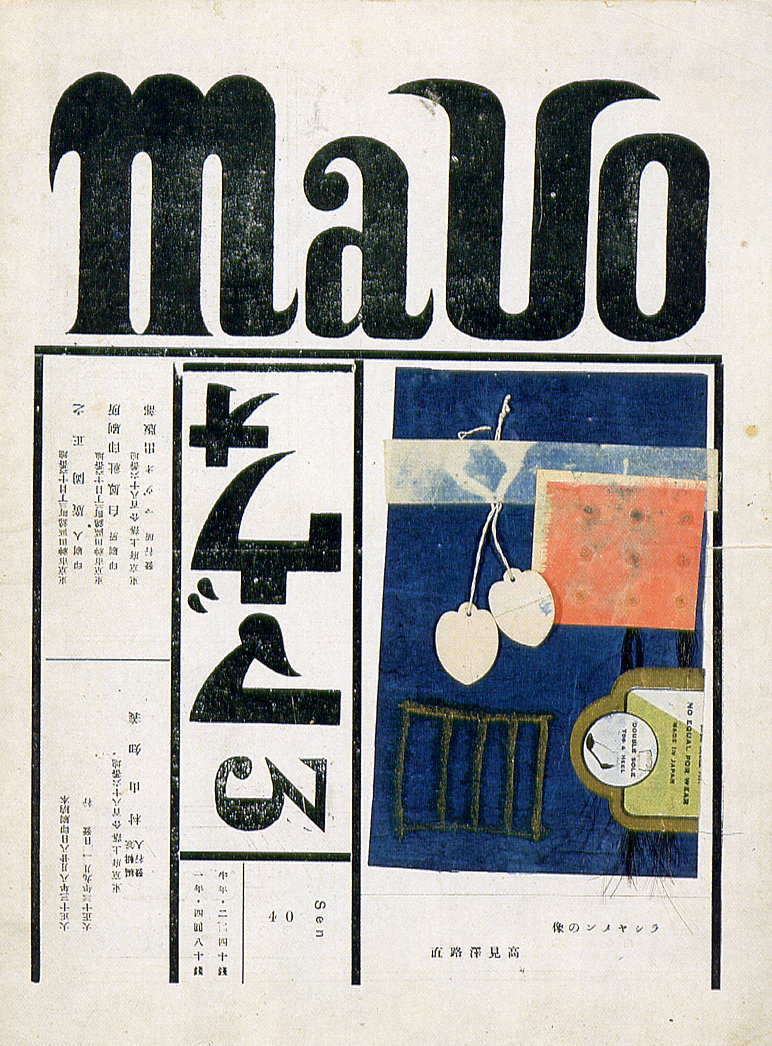
Led by Tomoyoshi Murayama, MAVO deployed an interdisciplinary array of performance art, painting, illustration and architecture, to communicate anti-establishment messages to the mainstream. Fueled by responses to industrial development, the Mavo group created works about crisis, peril and uncertainty. Art historian Gennifer Weisenfeld has written that Mavo sought to reintegrate art into daily life. The journal MAVO appeared in seven issues between July 1924 and August 1925.

In 1924, Rodchenko produces what is likely his most famous poster, an advertisement for the Lengiz Publishing House sometimes titled “Books”, which features a young woman with a cupped hand shouting “книги по всем отраслям знания” (Books in all branches of knowledge), printed in modernist typography.
Edwin Hubble announces that Andromeda is a galaxy, and that the Milky Way is only one of many such galaxies in the universe.
In his PhD thesis, Louis de Broglie postulates the wave nature of electrons and suggests that all matter has wave properties; this concept forms a central part of the theory of quantum mechanics.
Also see: RADIUM AGE 1924.
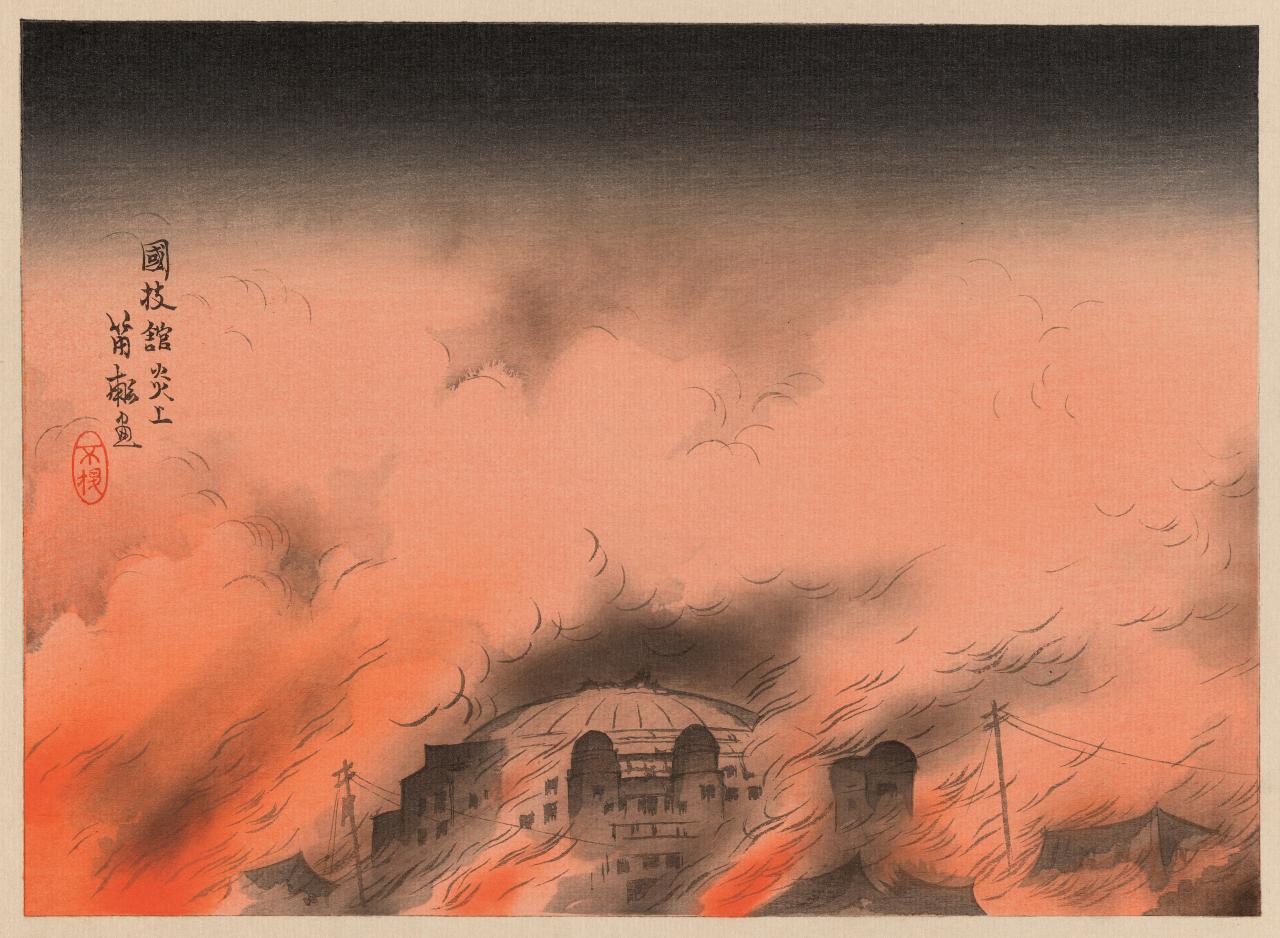
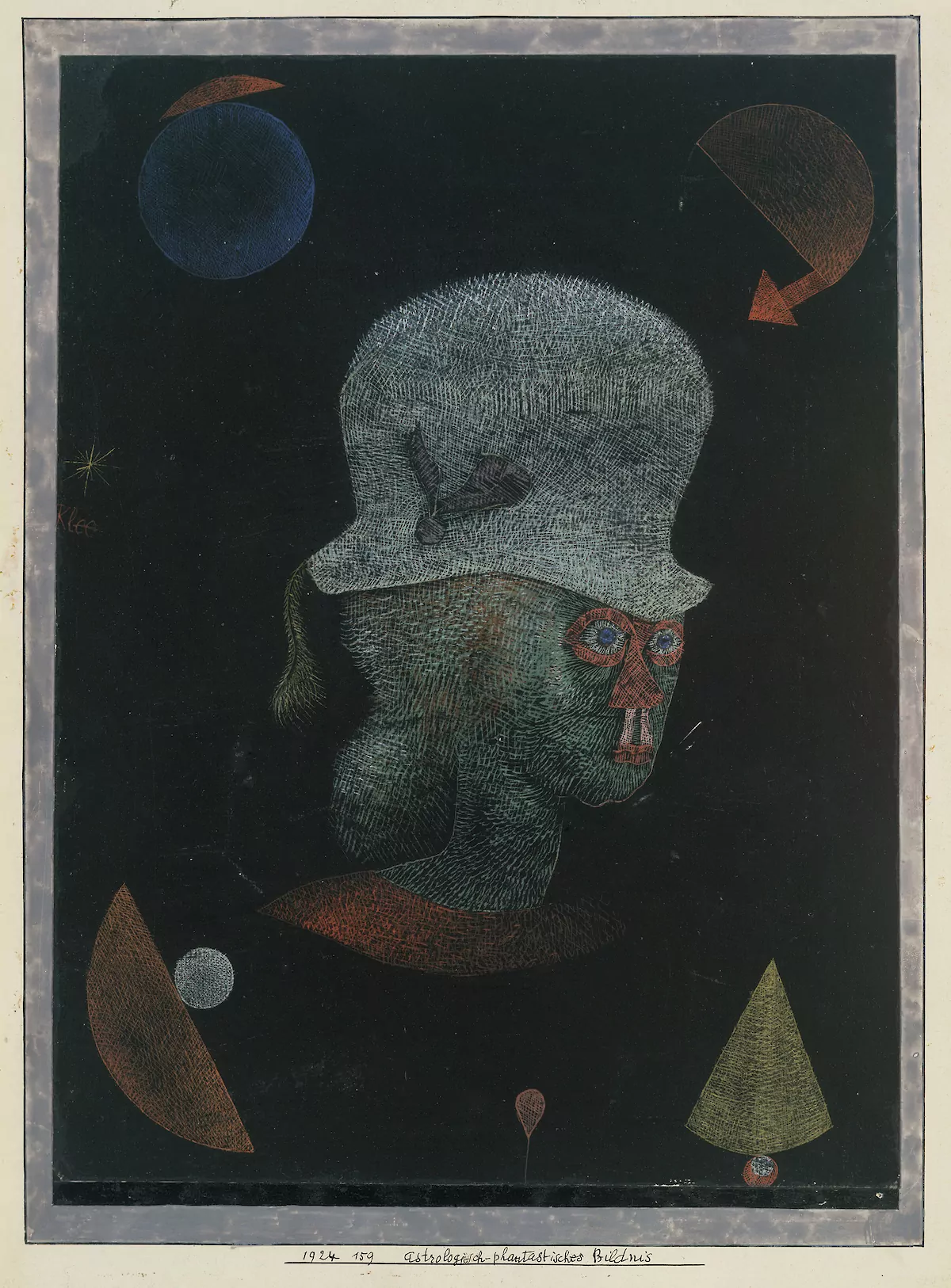
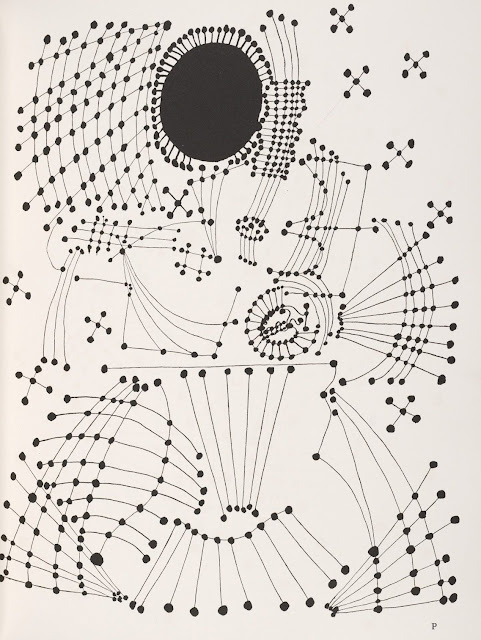
“I have always liked star charts,” Picasso said in a 1926 interview.
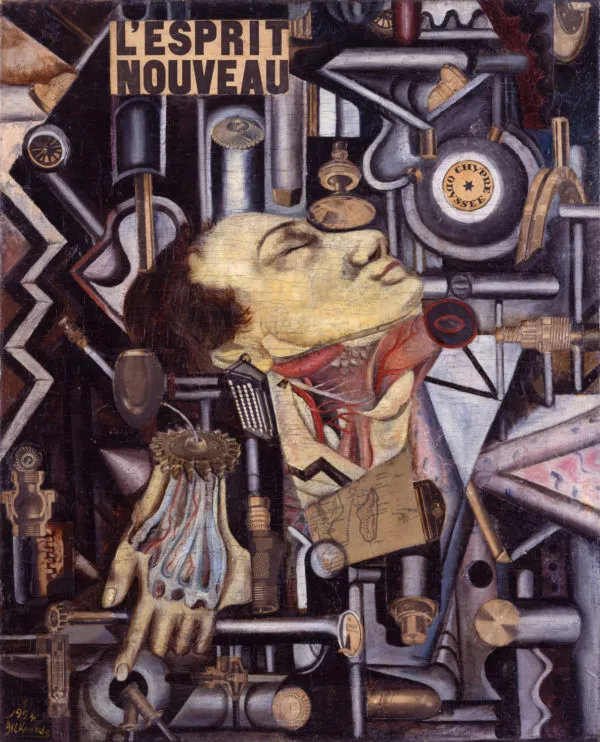
From the IAFOR website:
The artist Kawabe Masahisa (1901–1990) depicted a human head surrounded by various machinery in his 1924 work Mekanizumu (“Mechanism”). The functions of the tools, pipes, screws, bolts and gears are difficult to guess, as one’s perception is limited and thus not able to contextualize the individual elements. The cold and grey-colored impression of the machinery is placed in contrast to the skin-coloured head of the human and the red of his dissected throat. The human parts blend almost naturally with the mechanical surroundings and vanish gradually while screws and gears are being assembled around them. A few mysterious objects such as a small typewriter and a piece of a map beneath the head, and the writing “L’Esprit Nouveau” in capital letters on the upper left side, attract one’s attention. On closer observation one will notice that these elements are made of actual paper, and they are not the only ones. Kawabe inserted further collage parts, such as small pipes, screws, and bolts, very precisely and with careful regard to the oil paint. By creating this illusionistic atmosphere the boundaries between the painted and collage elements merge naturally.
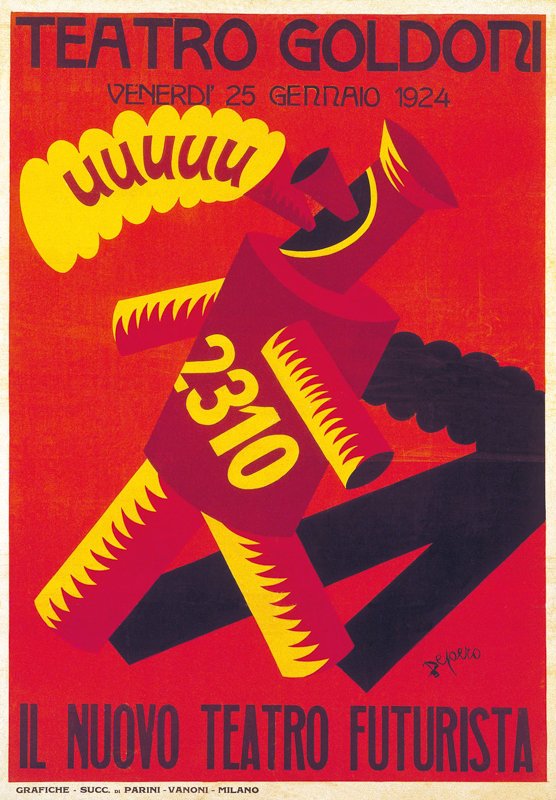
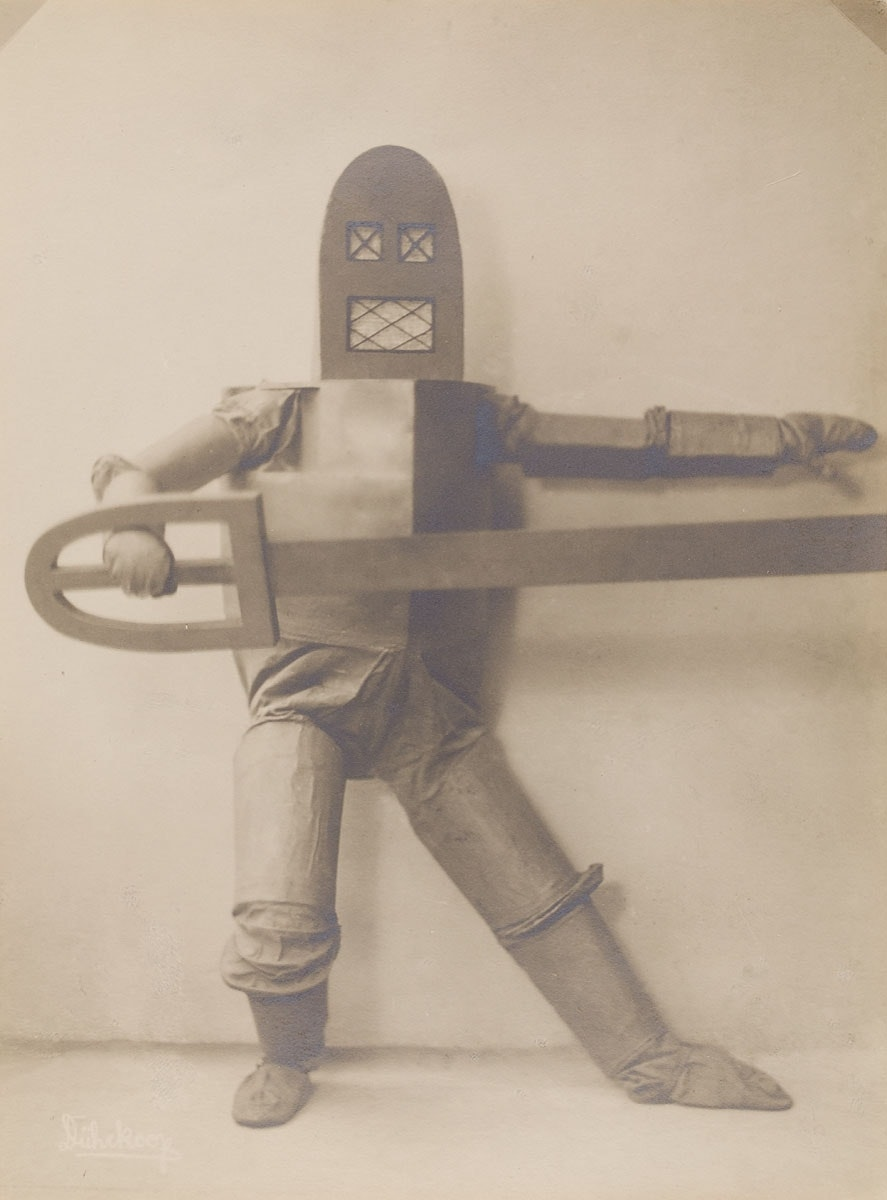
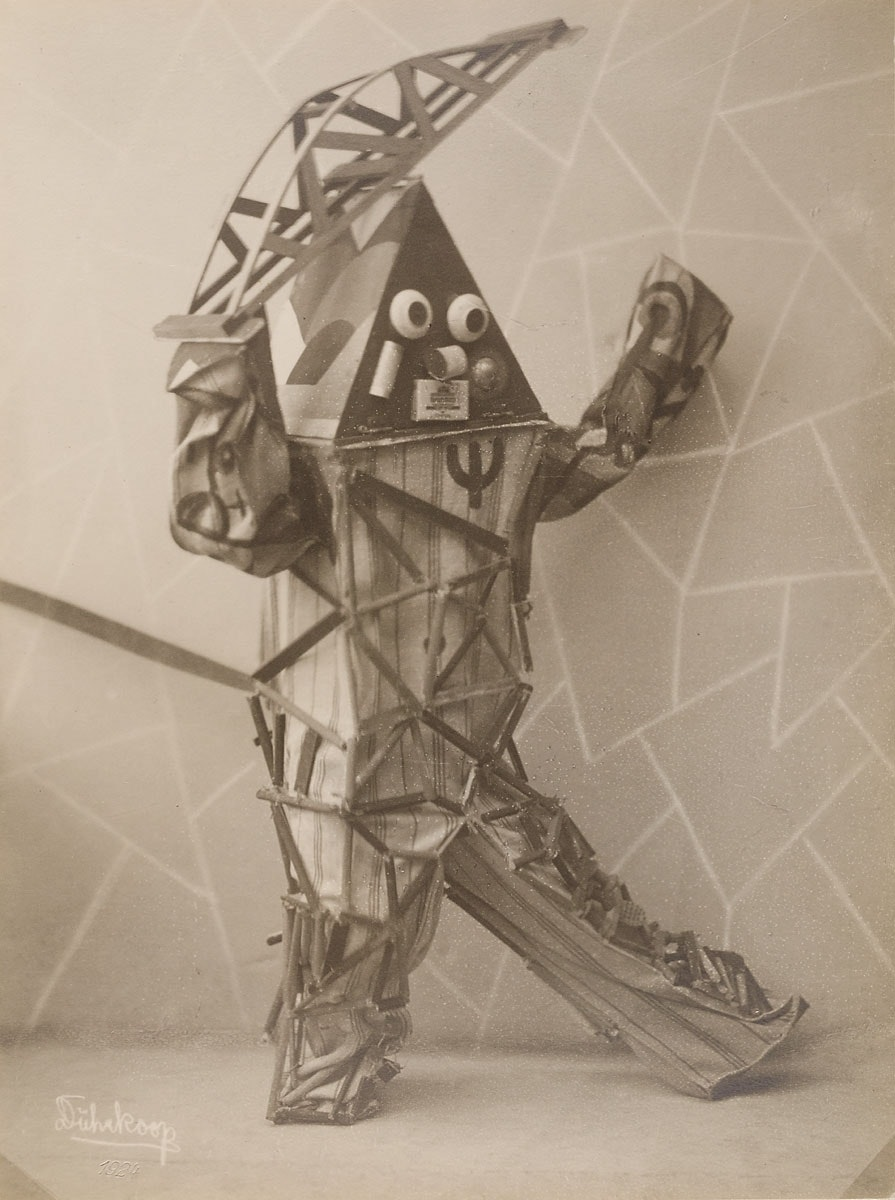
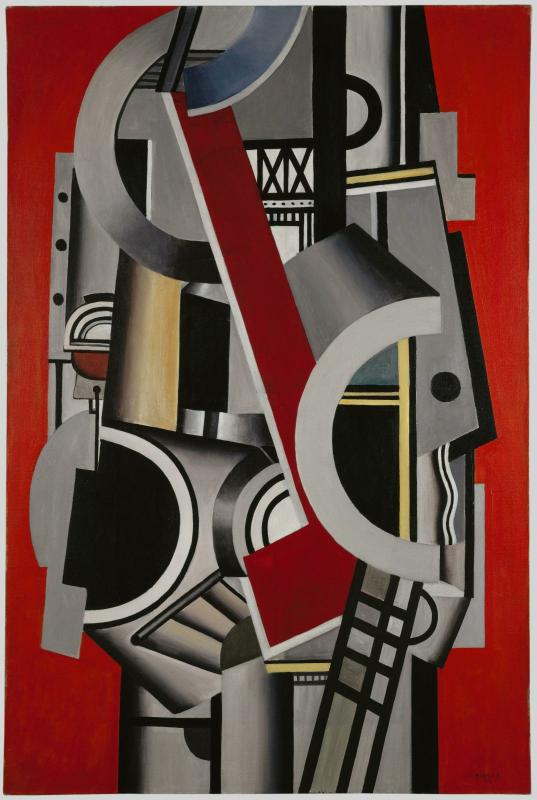
Léger created an entire series with this title. See below for an example of an sf novel with this artwork as a cover illustration.
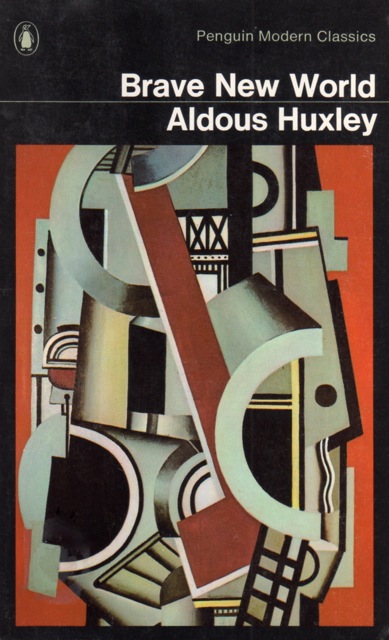
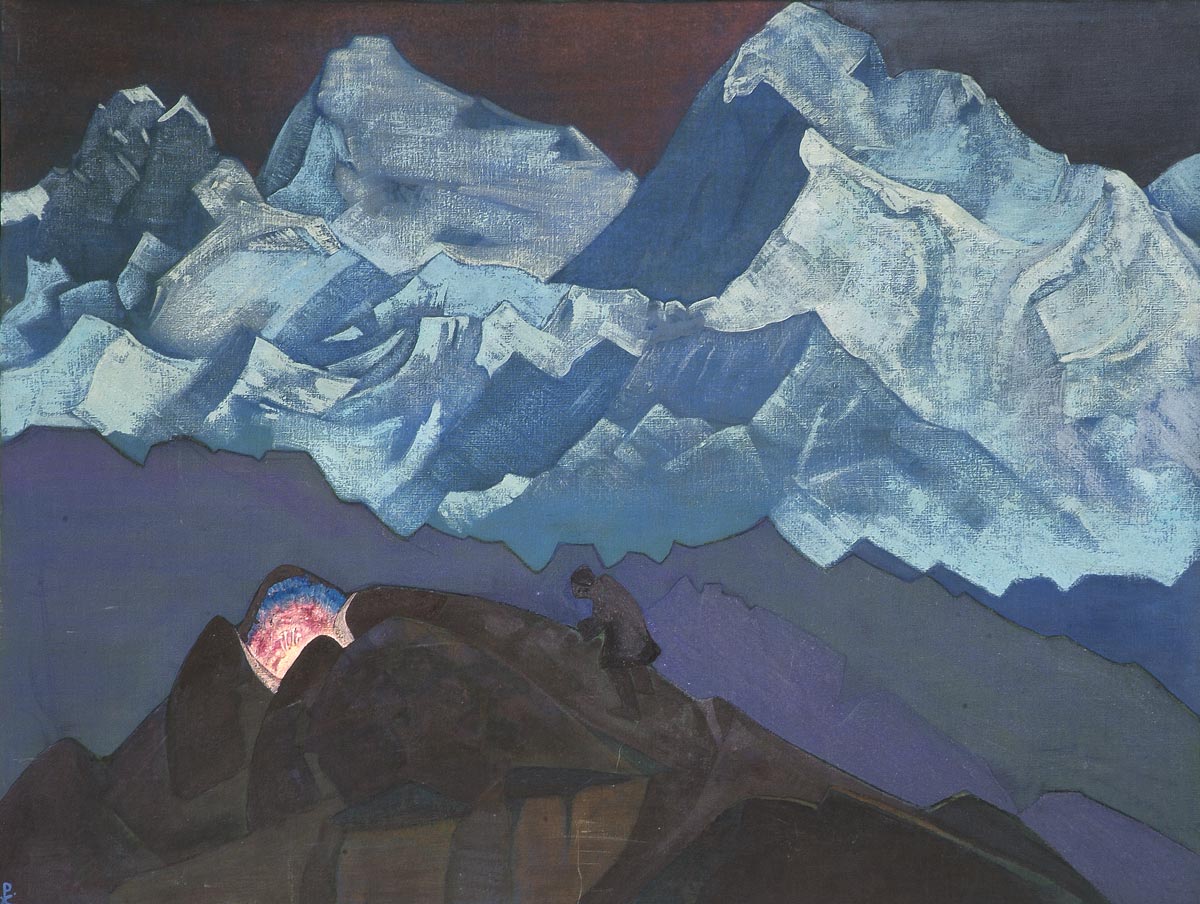
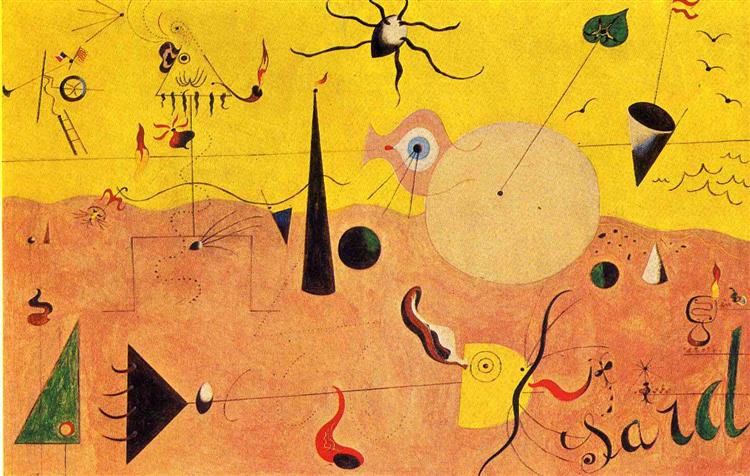
Miró’s iconographic forms, such as the pipe-smoking hunter on the left, are more than just abstractions and have become something like symbols.
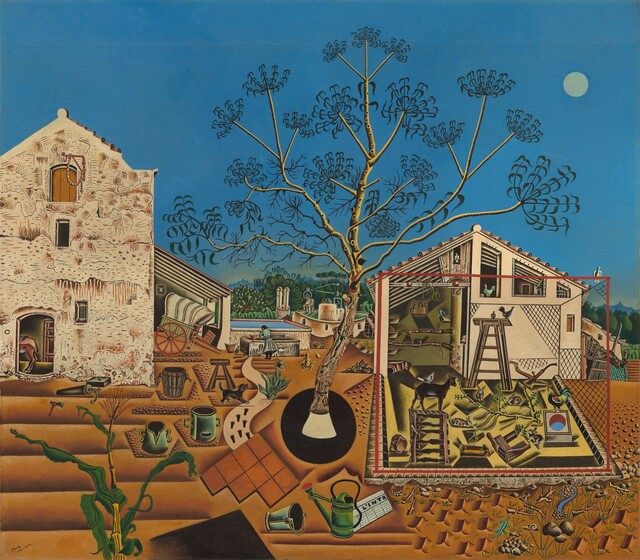
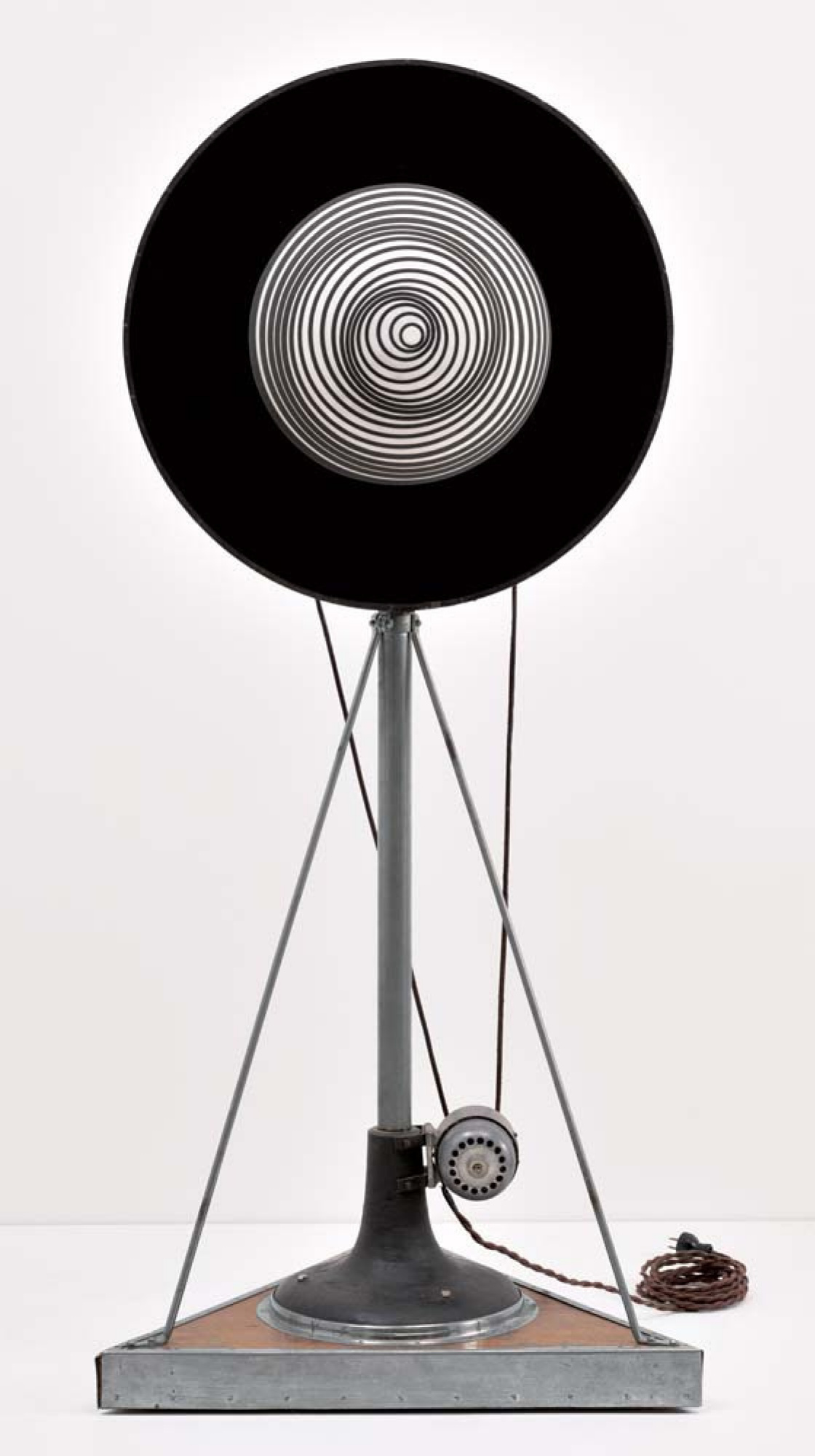
Duchamp continued his experiments with kinetic art in the work Rotary Demisphere, Precision Optics (1924). This piece worked in a similar way to Rotary Glass Plates, however it consisted of a rotating hemisphere, where the rotating of the image on the object created the optical effect, rather than the moving parts of the machine itself.
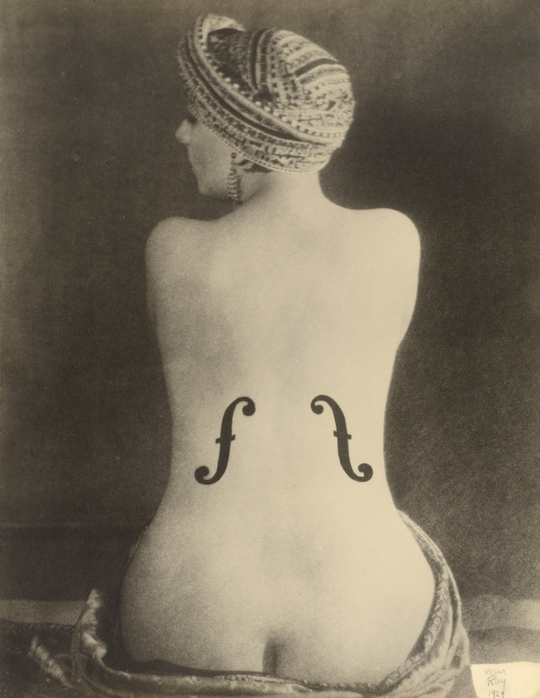
Le Violon d’Ingres is a black-and-white photograph created by American visual artist Man Ray in 1924. It is one of his best-known photographs and of surrealist photography.
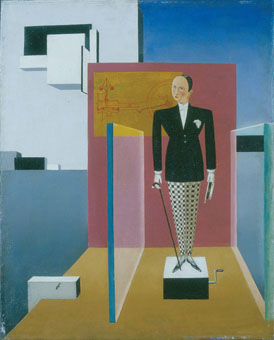
The New Adam depicts an ironic ideal of “modern” man in the 1920s. It shows an extremely fashion-conscious man who is fragile, like clockwork. With this and other paintings, one reads, Bortnyik ironically referenced the “brave new world” of constructivism. The artist uses precise details, geometric shapes and colors in abstract composition.
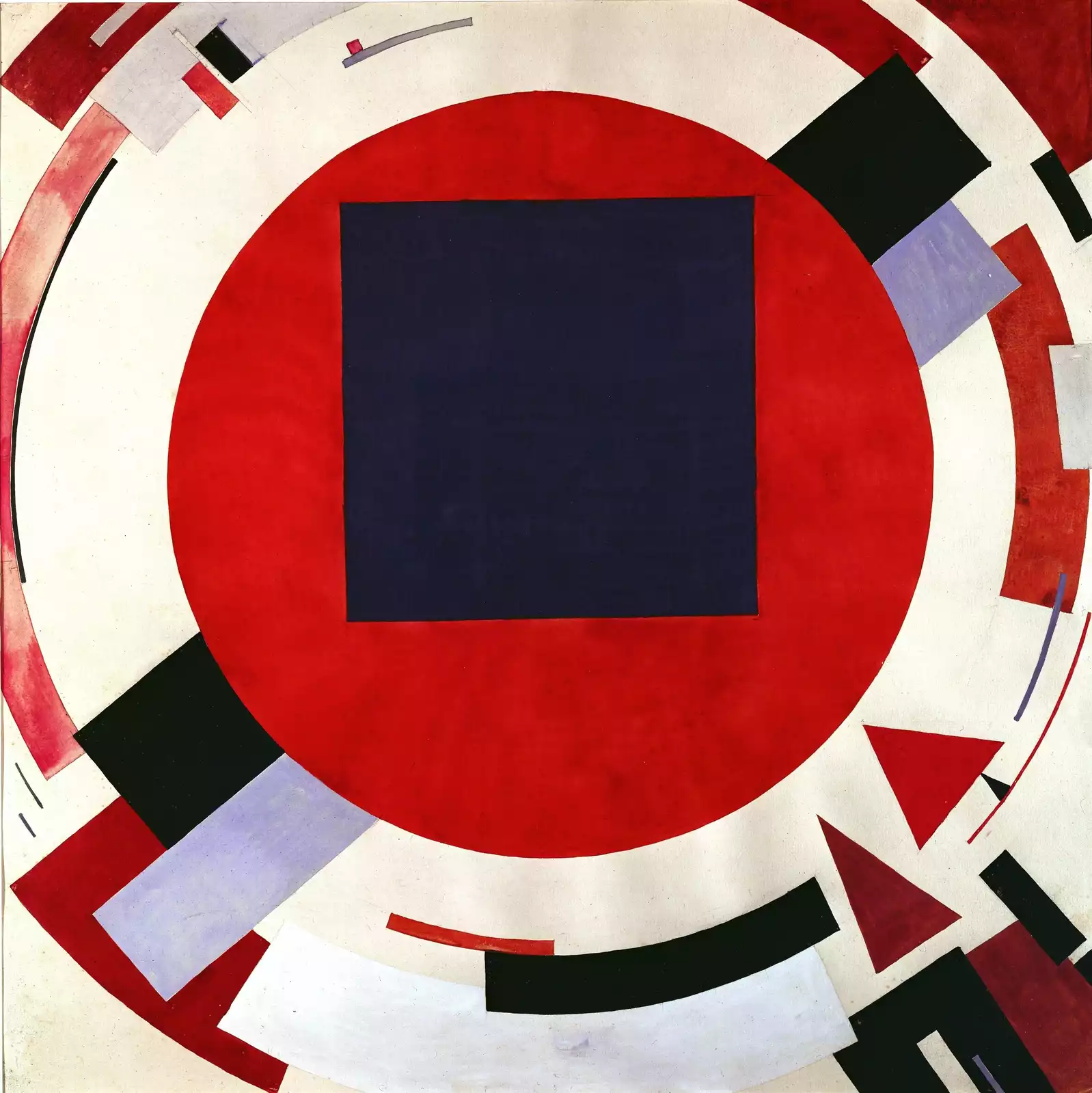
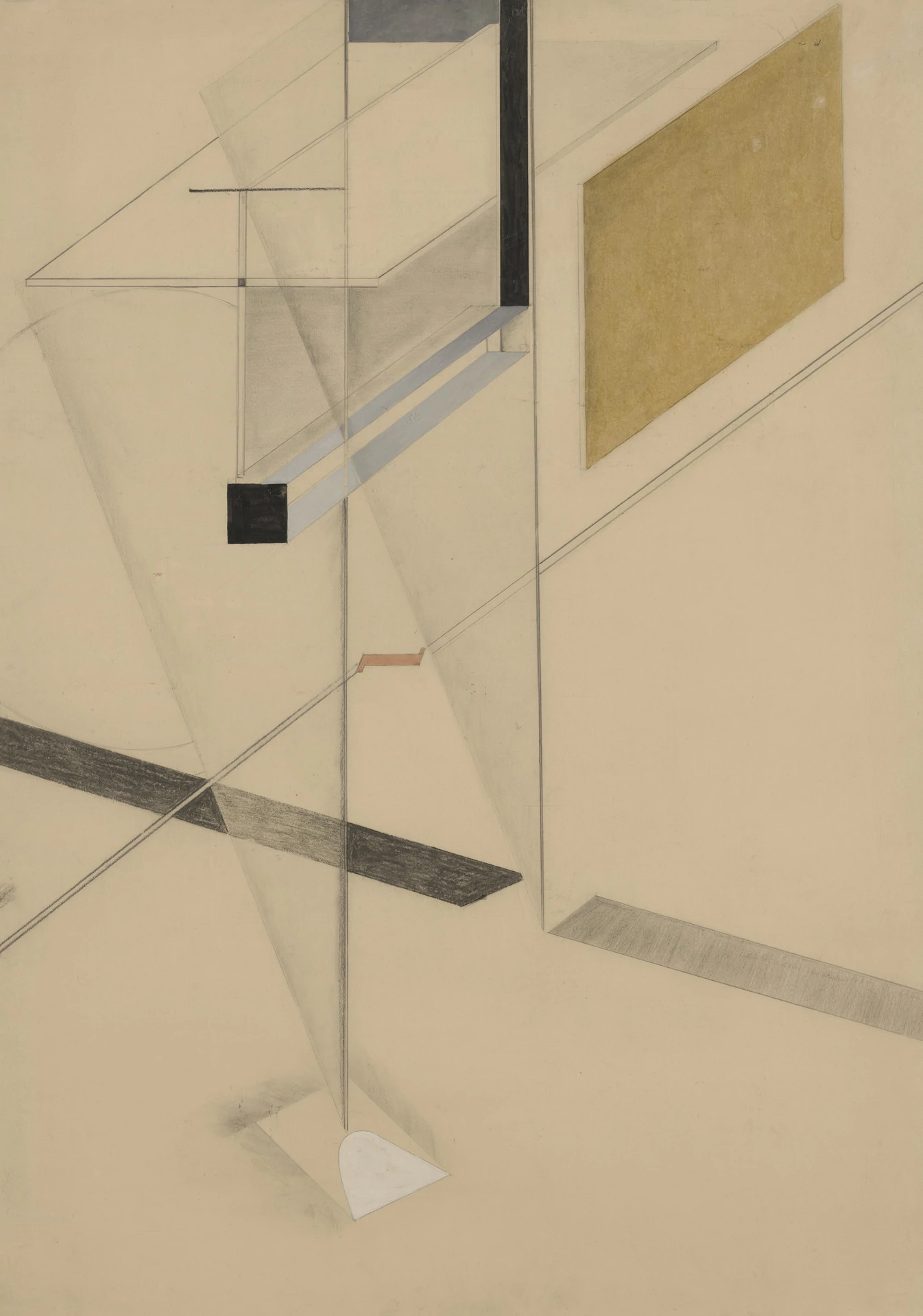
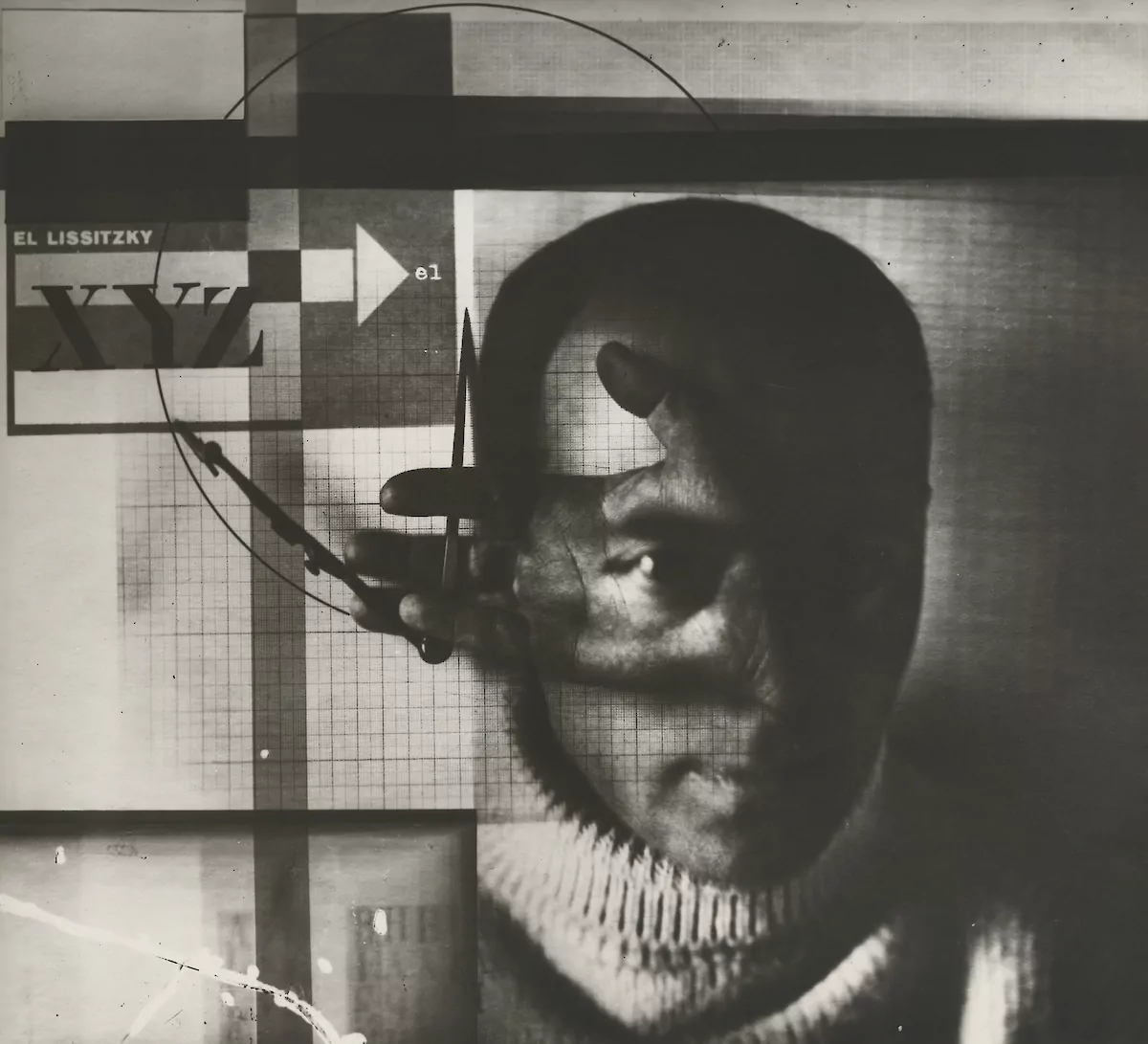

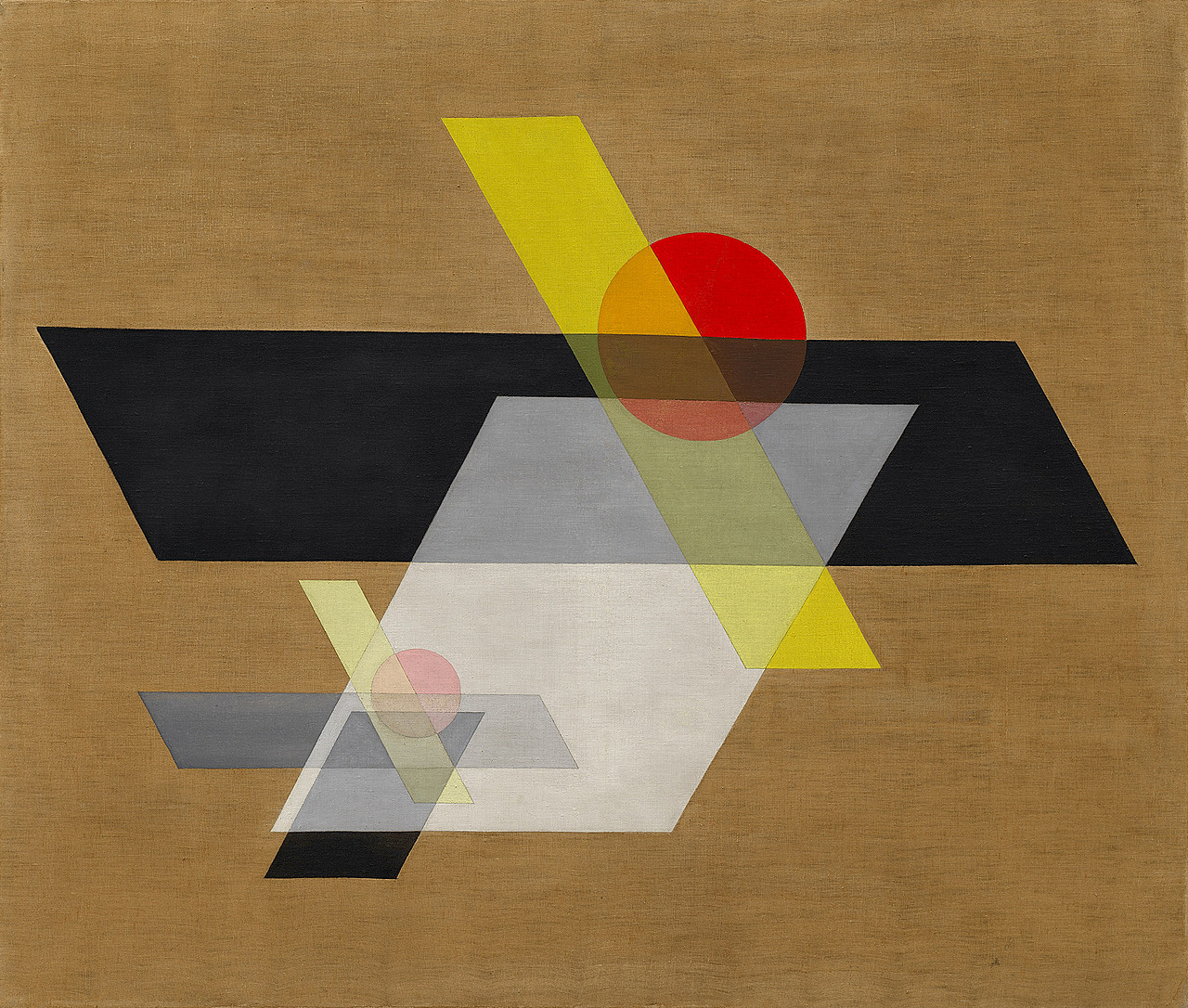
Moholy-Nagy painted A II (Construction A II) soon after joining the faculty of the Bauhaus school of art and design in Weimar, Germany. From the Guggenheim’s website: “As if constructed around a mathematical formula, the canvas is composed of two similar bodies of seemingly intersecting planes and circles with a smaller structure hovering below a larger one, both crossing through a white plane. Varying in degrees of perceived transparency and color intensity, these shapes appear to overlap, forming an architectural construction in space.”
Moholy-Nagy came under the influence of Malevich and Lissitzky, and in 1923 joined the Bauhaus staff as artistic director. He was particularly successful in his use of processes from the world of technology, which he used with a care and a knowledge based on experience in the Bauhaus laboratory and workshops.
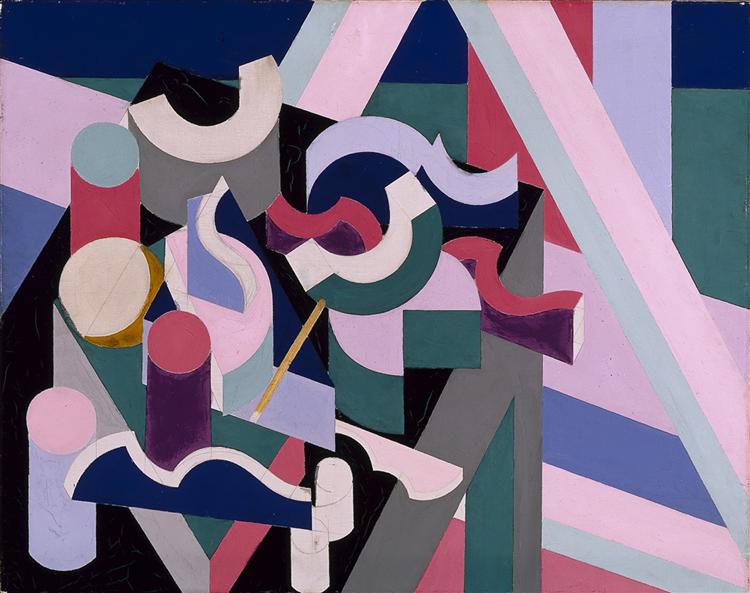
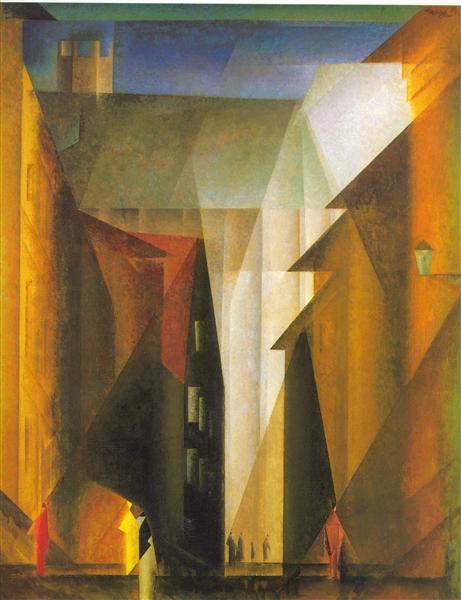
In Robert M. Pirsig’s Zen and the Art of Motorcycle Maintenance (1974) the narrator finds a print of “Church of the Minorities” hanging in the office that used to be his (in his earlier life as Phaedrus). He writes that the painting’s “subject, a kind of Gothic cathedral, created from semiabstract lines and planes and colors and shades, seemed to reflect his mind’s vision of the Church of Reason and that was why he’d put it here.”

This is the twelfth in the series of fifty engravings entitled The War, published in 1924. Dix’s War prints were published in 1924, the tenth anniversary of the outbreak of the war, as an antidote to the heroic interpretation of the war.
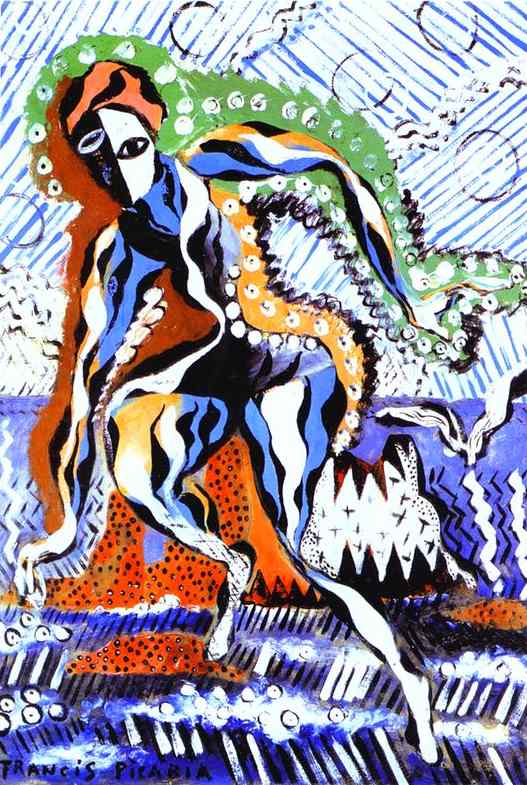
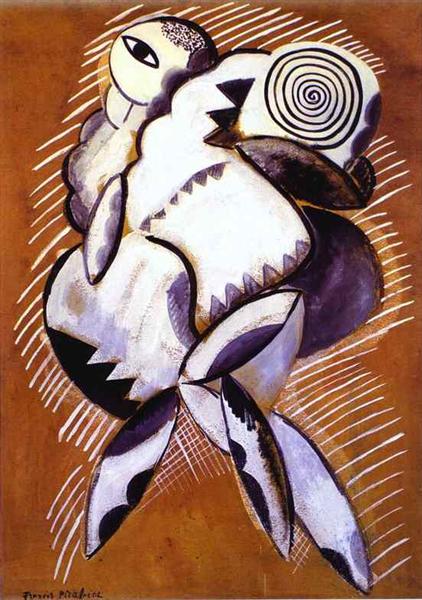
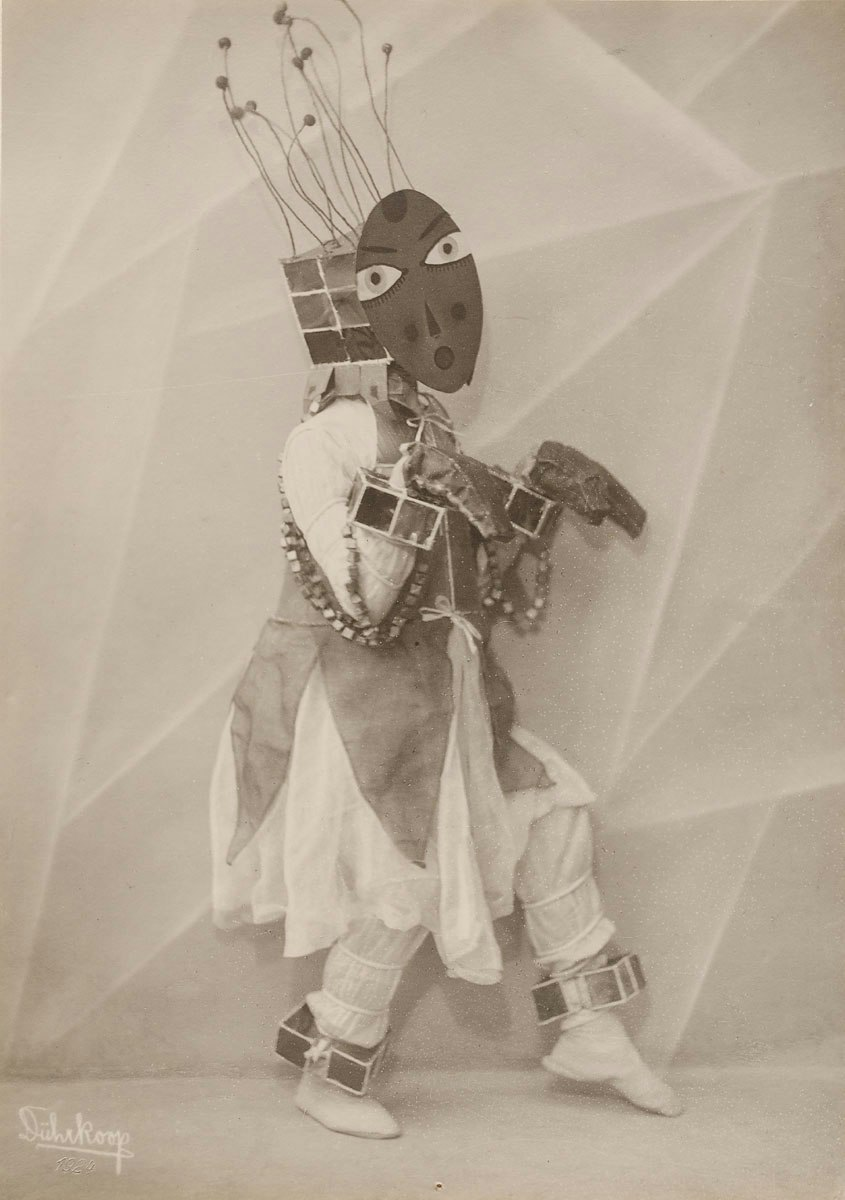
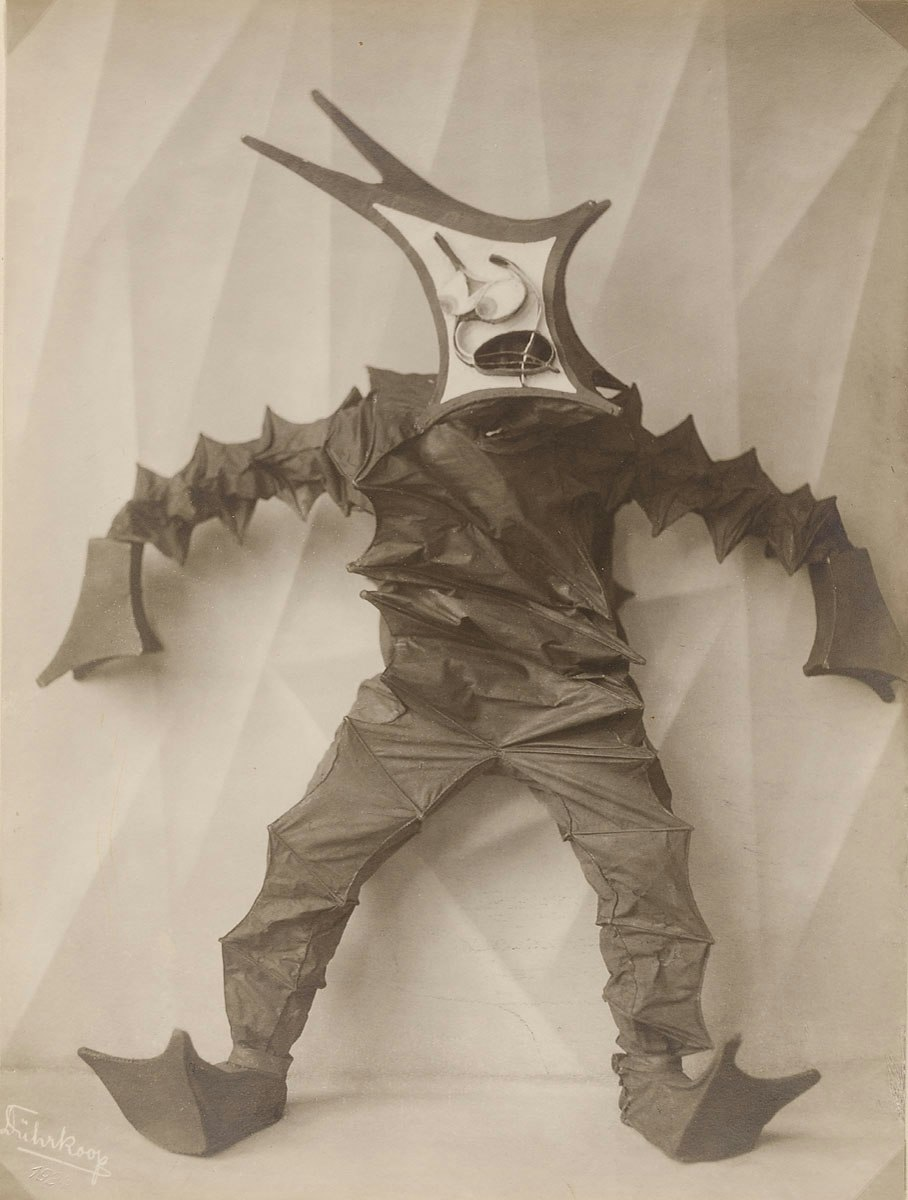
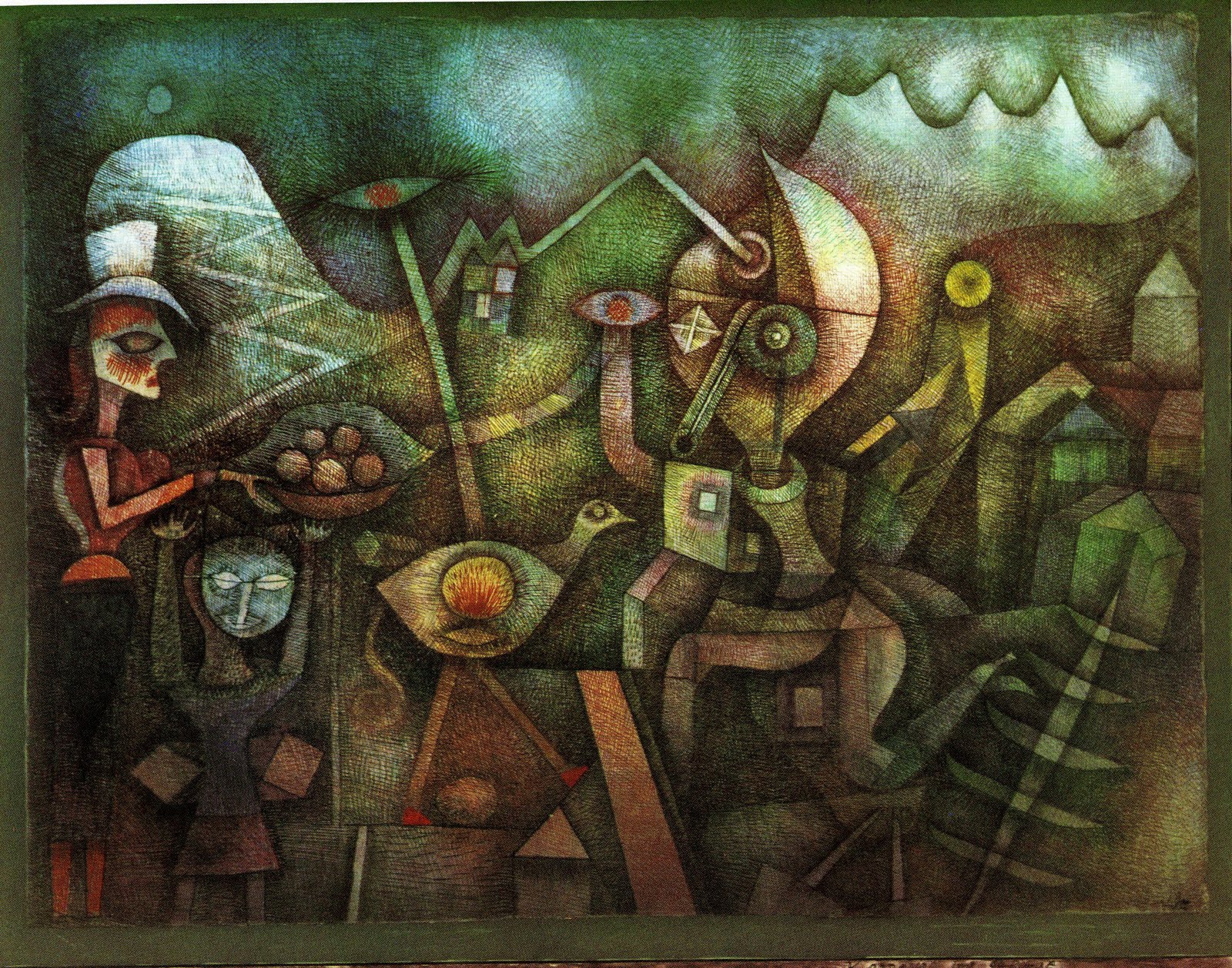

From the Guggenheim’s website: “During the summer of 1923 Joan Miró began painting The Tilled Field, a view of his family’s farm in Montroig, Catalonia. Although thematically related to his earlier quasi-realistic, Fauvist-colored rural views, such as Prades, The Village, this painting is the first example of Miró’s Surrealist vision. Its fanciful juxtaposition of human, animal, and vegetal forms and its array of schematized creatures constitute a realm visible only to the mind’s eye, and reveal the great range of Miró’s imagination.”
“Even the enormous eye peering through the foliage of the pine tree, and the eye-covered pine cone beneath it, can be traced to examples of early Christian art, in which the wings of angels were bedecked with many tiny eyes. Miró found something alive and magical in all things: the gigantic ear affixed to the trunk of the tree, for example, reflects his belief that every object contains a living soul.”
Not science-fictional enough for you? Note that a detail from this painting would be used as the cover illustration for a 1970 Penguin edition of Orwell’s Animal Farm.
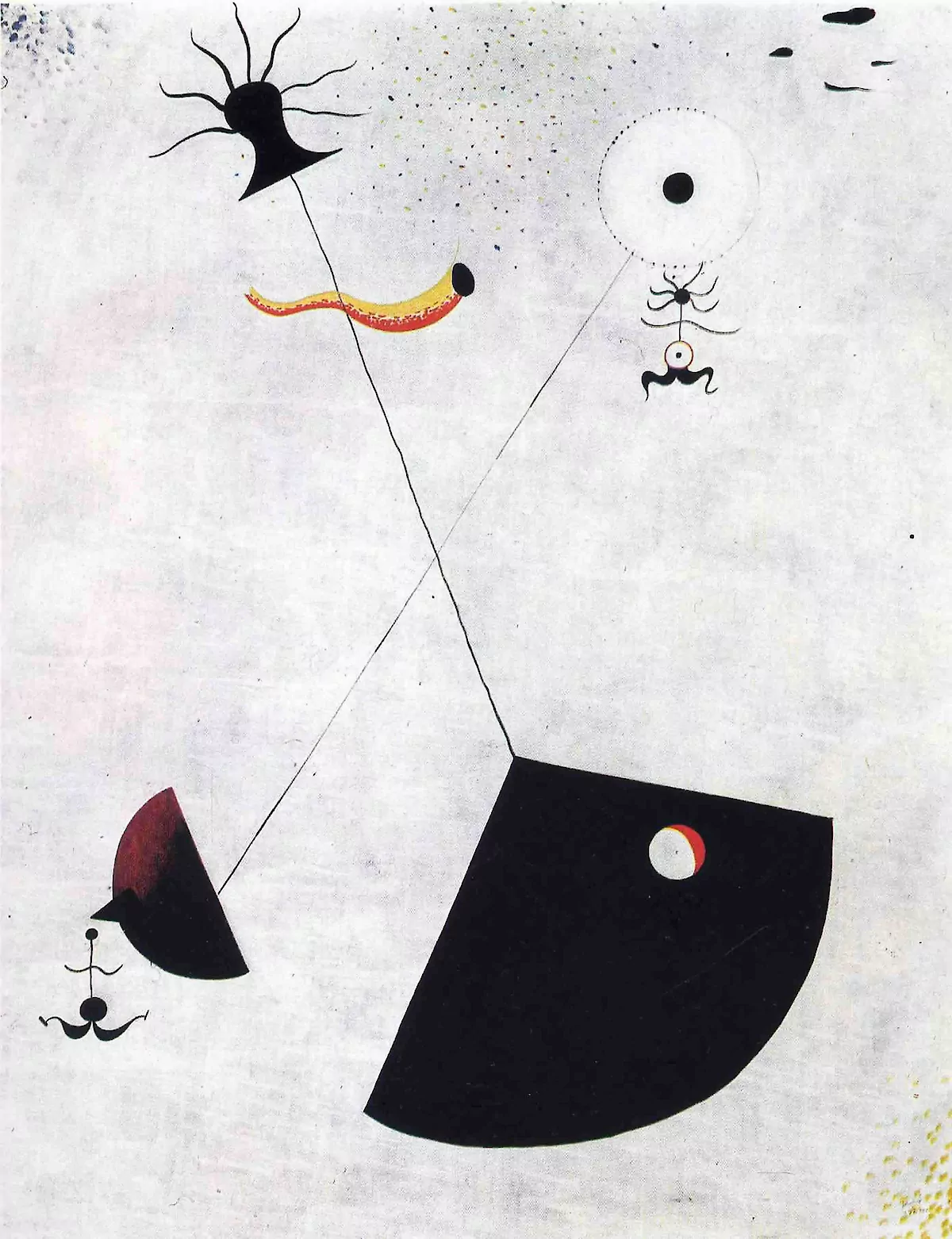
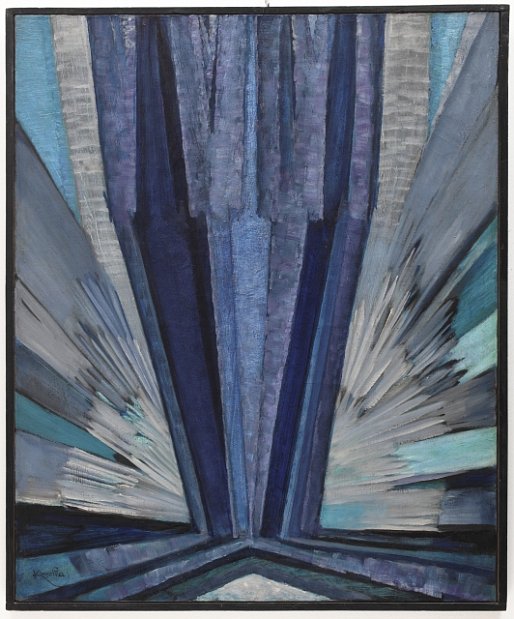
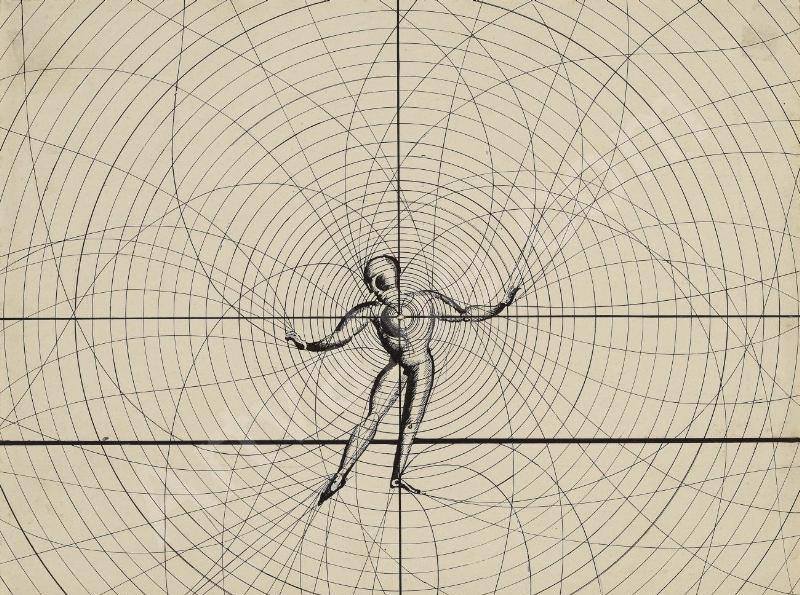
Oskar Schlemmer, Egozentrische Raumlineatur (Egocentric Space-Delineation), 1924
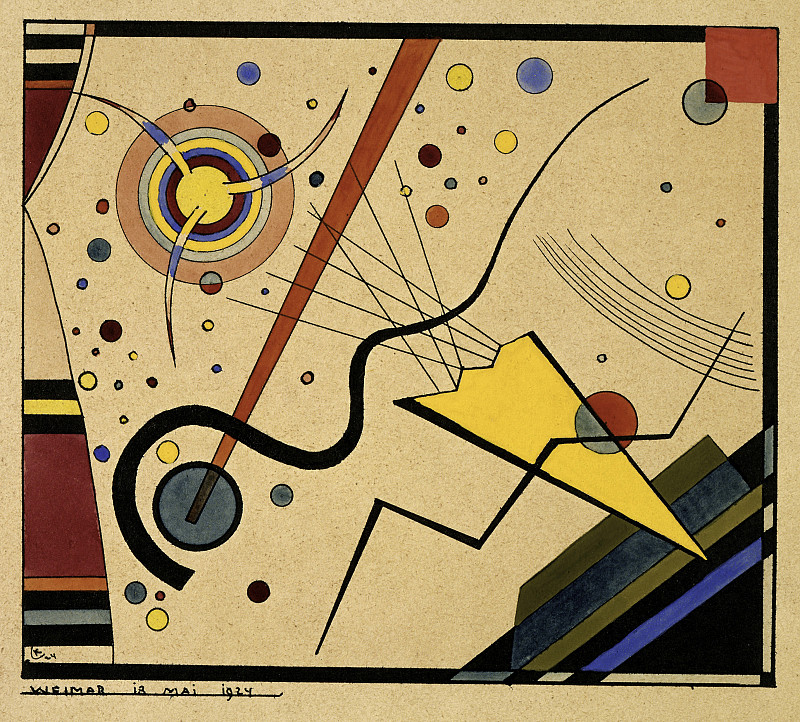
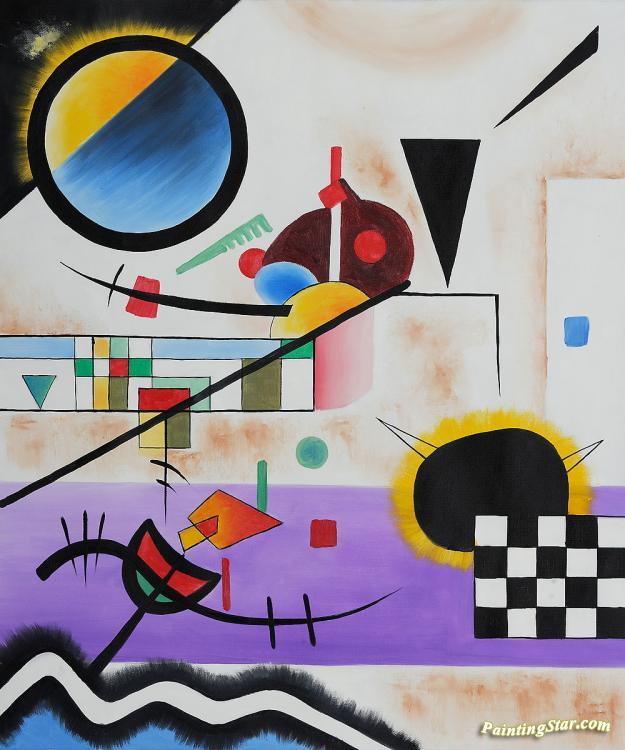
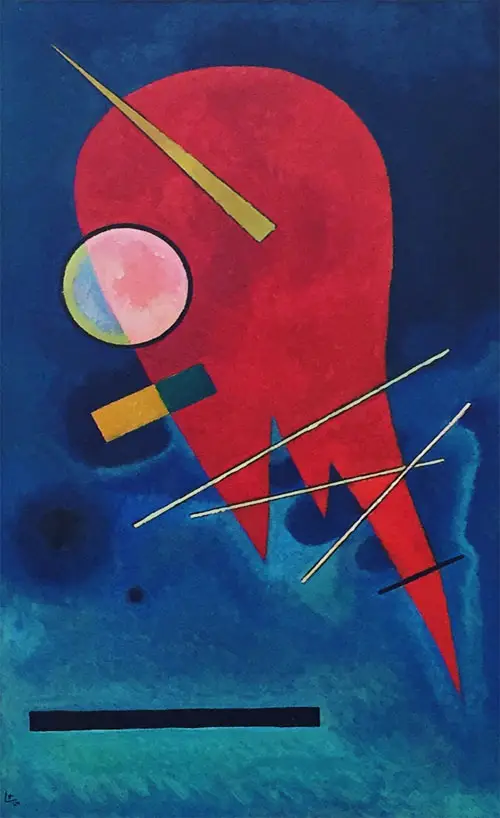
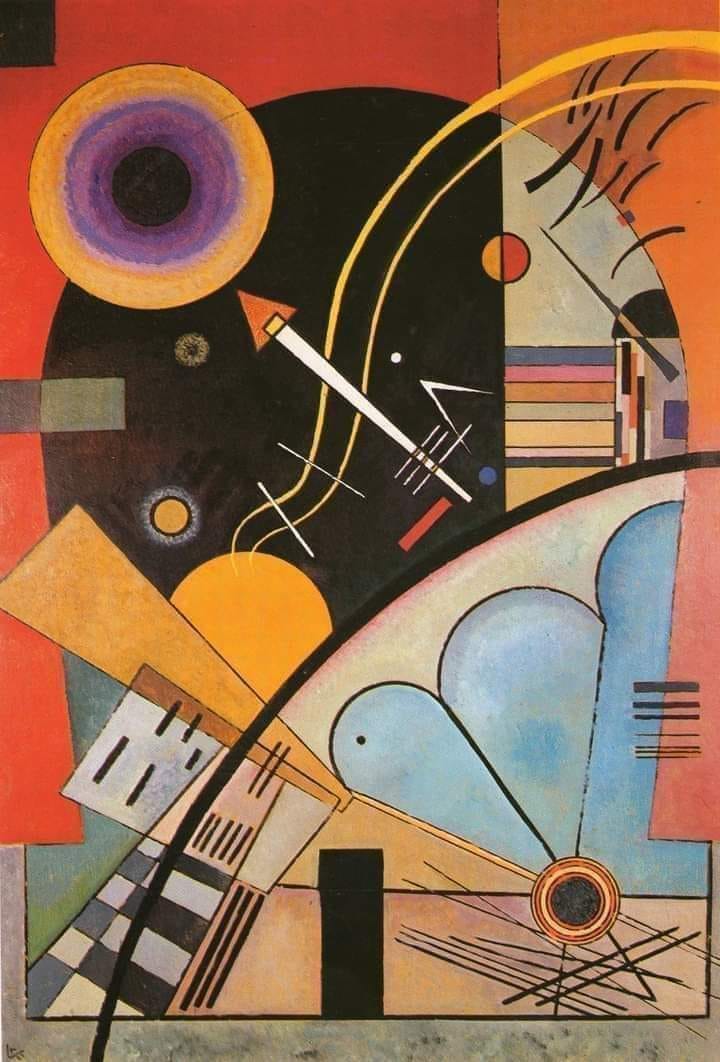
I’m a little dubious about “Calm Tension,” which is supposedly in a private collection. Because I haven’t seen it on the official Kandisnky website. But anyway, see below. A cropped and reversed version of the painting was used as a cover illustration for a 1962 Pyramid paperback of Edmond Hamilton’s The Haunted Stars.
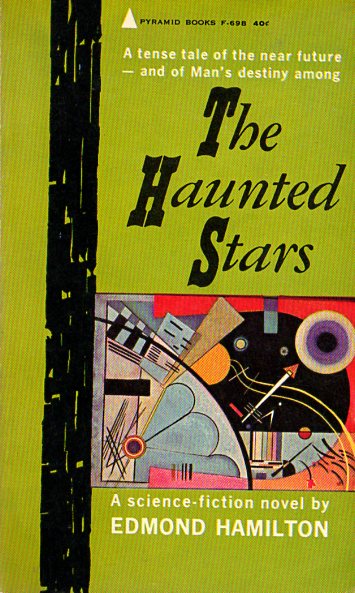
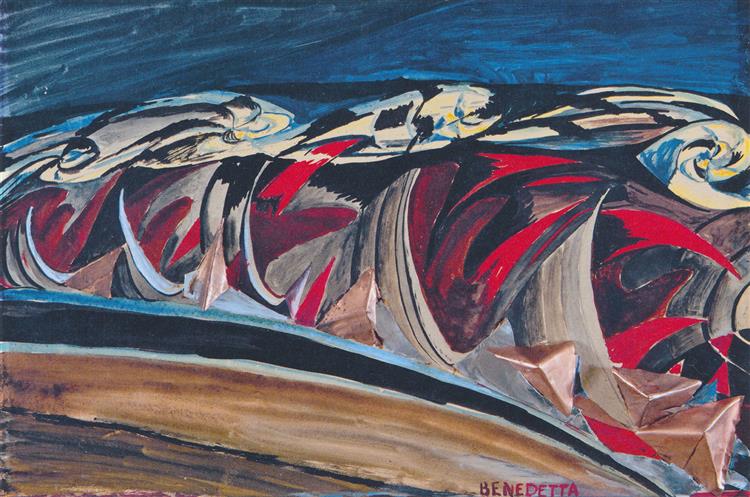
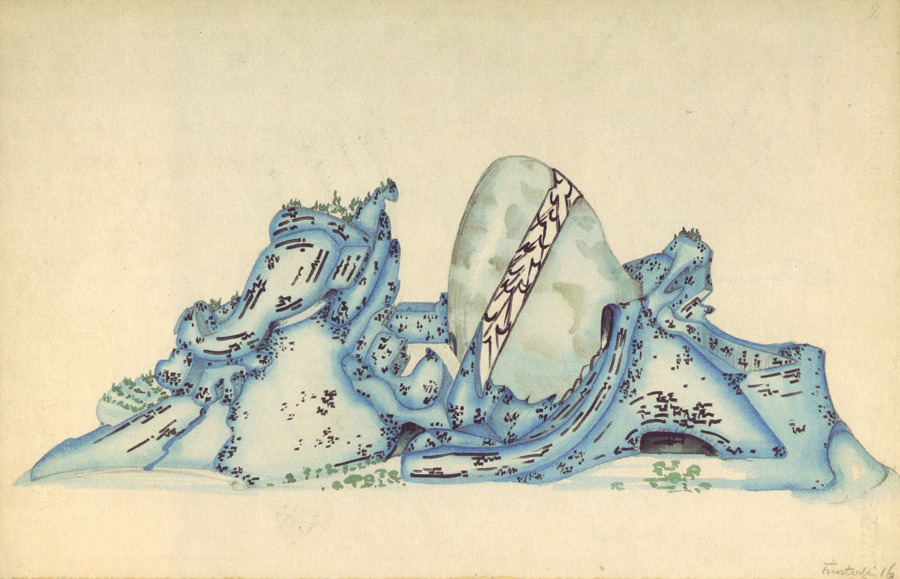
According to Finsterlin the interior of a building is also in the remarkable area somewhere between geology and biology: “inside the new building people will not feel that they are inmates of a fairy-tail crystal gland, but like internal residents of an organism, wandering from organ to organ: the giving and receiving symbiosis of a giant fossil womb.” (Finsterlin, in Döhl) Finsterlin compares an architecture of three-dimensional curves with the “organic cavities” in our body, the incomparable curves “of the skull cavity, the thorax, the metral cavity, the alimentary canal — or the chambers of the heart.”
— from Biomorphic Architecture by Günther Feuerstein. Quoted at 50watts.com.
Also see: Hermann Finsterlin, Eine Annaherung by Reinhard Döhl (Stuttgart: Hatje, 1988).
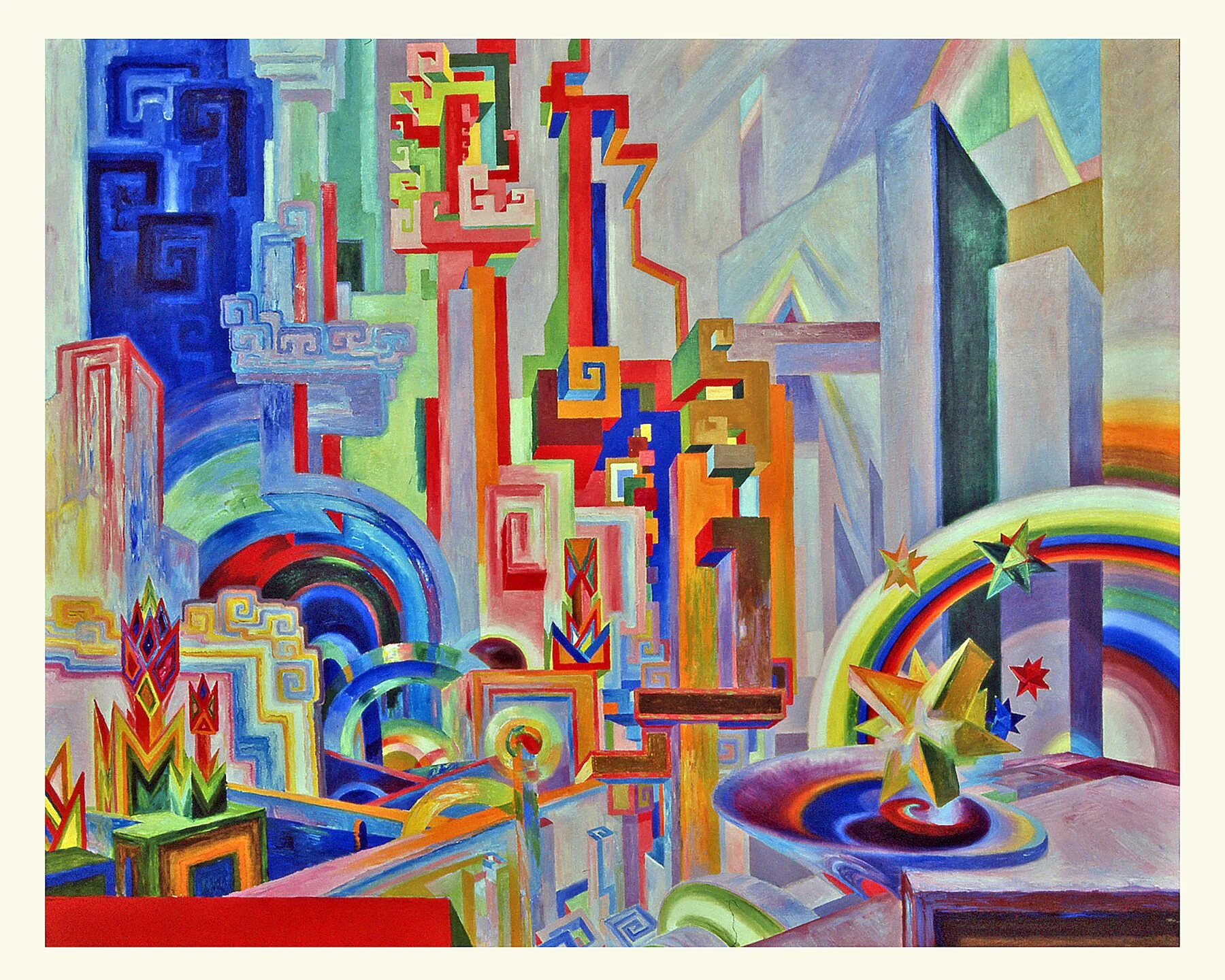
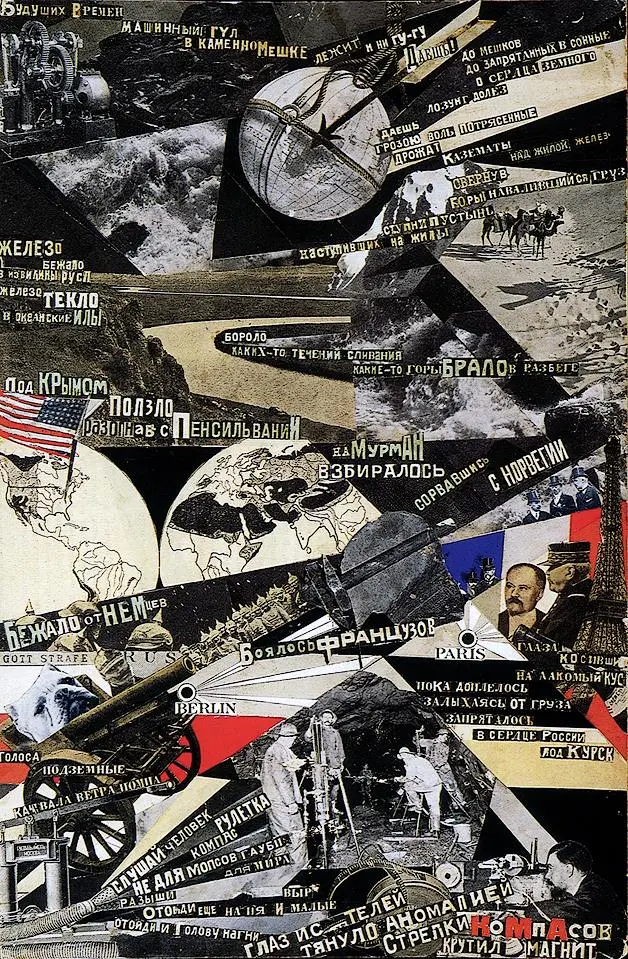
NOTES ON SURREALISM:
The term “surrealism” originated with Apollinaire in 1917. However, the Surrealist movement was not officially established until after October 1924, when Breton published his Surrealist Manifesto. Although Einstein’s cold and elegant concept of Space-Time had more or less replaced the spatial fourth dimension in the minds of the public, the Surrealists continued to make reference to it — as an act of rebellion and vindication of the absurd.
Breton, a trained psychiatrist, along with French poets Louis Aragon (1897–1982), Paul Éluard (1895–1952), and Philippe Soupault (1897–1990), were influenced by the psychological theories and dream studies of Sigmund Freud (1856–1939) and the political ideas of Karl Marx (1818–1883). Using Freudian methods of free association, their poetry and prose drew upon the private world of the mind, traditionally restricted by reason and societal limitations, to produce surprising, unexpected imagery. The cerebral and irrational tenets of Surrealism find their ancestry in the clever and whimsical disregard for tradition fostered by Dadaism a decade earlier.
[T]he realistic attitude, inspired by positivism, from Saint Thomas Aquinas to Anatole France, clearly seems to me to be hostile to any intellectual or moral advancement. I loathe it, for it is made up of mediocrity, hate, and dull conceit. It is this attitude which today gives birth to these ridiculous books, these insulting plays. It constantly feeds on and derives strength from the newspapers and stultifies both science and art by assiduously flattering the lowest of tastes; clarity bordering on stupidity, a dog’s life. The activity of the best minds feels the effects of it; the law of the lowest common denominator finally prevails upon them as it does upon the others.
— Andre Breton, Manifesto of Surrealism
Surrealism showed up in the aftermath of WWI with a significantly different energy and purpose vs. the Futurists, Vorticists, and Dadaists. Their concerns were serious, and they were committed to dialogue with the “other” — see Breton’s 1924 Manifesto of Surrealism, which talks about “re-eestblishing dialogue with the absolute truth by freeing both interlocutors [that is, the surrealist and the absolute truth itself] from any obligation of politeness.”
They were also politically engaged — they attacked French colonialism and nationalism, they sought to reconcile orthodox Marxism with avant-garde experimentation, they were anti-fascist and later anti-Stalinist.
I’d connect surrealism and abstract art in that Surrealist paintings often exhibit a deeply mysterious atmosphere, with unexplained elements that seem to refer to something else seen, read or imagined beyond the canvas. Objects seem to symbolize something; there are symbols and hieroglyphic signs. Diametrically and sometimes more subtly opposed elements. Traces, tracks and signals point outward and inward. Objects in the world seem to carry a charge of something unspoken — perhaps threatening.
MORE RADIUM AGE SCI FI ON HILOBROW: RADIUM AGE SERIES from THE MIT PRESS: In-depth info on each book in the series; a sneak peek at what’s coming in the months ahead; the secret identity of the series’ advisory panel; and more. | RADIUM AGE: TIMELINE: Notes on proto-sf publications and related events from 1900–1935. | RADIUM AGE POETRY: Proto-sf and science-related poetry from 1900–1935. | RADIUM AGE 100: A list (now somewhat outdated) of Josh’s 100 favorite proto-sf novels from the genre’s emergent Radium Age | SISTERS OF THE RADIUM AGE: A resource compiled by Lisa Yaszek.

